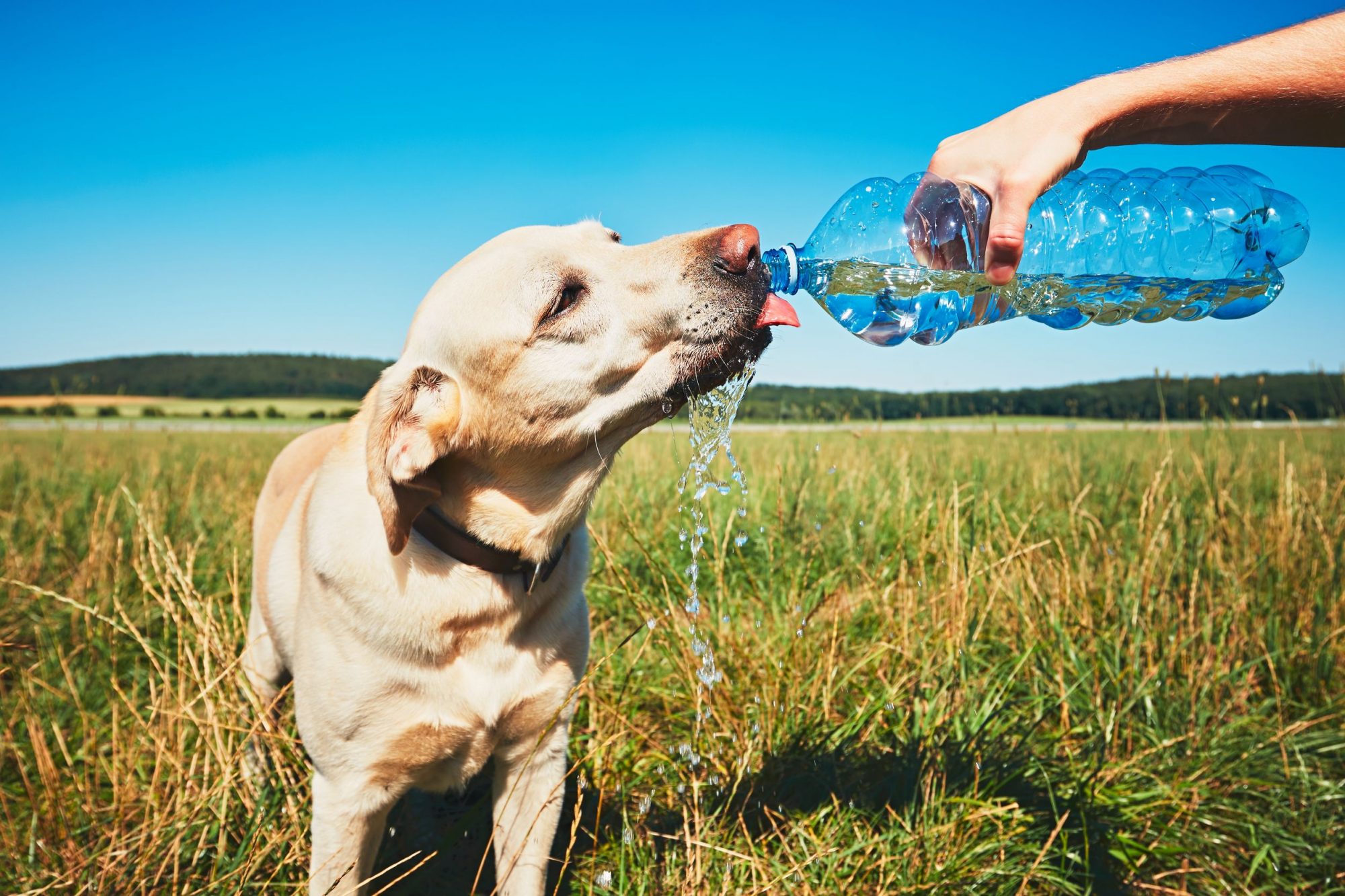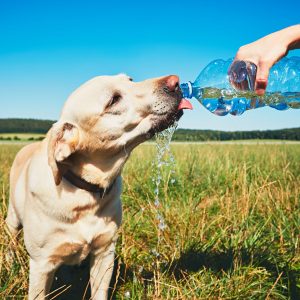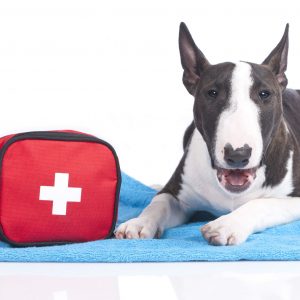Posts in Category: Emergency
I Think My Pet Ate Something Poisonous

Do you think that could be poisonous?
Have you ever uttered these words wondering if your pet just ate something that could be poisonous? I think we all have at one time or another. It is not a good feeling! The situation is only compounded when your pet ingests something questionable AFTER your veterinarian has closed for the day or on the weekend.
Does poisonous always equal emergency?
If you suspect your pet could have ingested something poisonous it could very well be an emergency, so the answer is maybe. During emergencies, time is of the essence so I am going to walk you through what you should do if this ever happens to you.
Become familiar with common pet poisons
First, you should become familiar with some common pet toxins. Our website features an article that contains some of the top pet poisons called in to the ASPCA Pet Poison Control. You can visit that article to learn more about these common but sometimes deadly poisonous items for pets.

- Over the counter human medication
- Human prescription medications
- Chocolate
- Mouse and rate poisoning
- Xylitol
- Grapes and raisins
- Vitamin D overdose
- Onions and garlic
- Alcohol
- Caffiene
- FOR CATS: Lilies (Lilium species)
- FOR CATS: Spot-on-flea/tick medication (especially over-the-counter brands that contain pyrethrins)

Some plants are poisonous too
These toxins represent a small sampling of things that pets ingest that end up to be poisonous. Some plants are more toxic to cats than dogs or vice versa. You can find a complete list at the ASPCA Pet Poison Control website. One plant that we have a lot of in the San Antonio area is Sago Palm. Sago Palms are extremely poisonous to dogs if they ingest any part of the plant. The seed or “nut” of the plant is the most toxic part of the plant. Ingestion of this plant can result in liver failure within 2-3 days.

Become familiar with the ASPCA Pet Poison Control Website
This list is by no means exhaustive so your best bet is to check the ASPCA Pet Poison Control (APPC) website if you are considering new plants in your house or yard, or using chemicals for your yard or for controlling pests. You can get quick access to the ASPCA Pet Poison Control website via our app. Visit our website for a link to download our hospital app.
We know it’s poisonous and an emergency, so now what?
Now that you know what things to avoid, let us go back to what to do if you have an emergency with one of these poisons. When your pet ingests something that you think may be poisonous, it is everyone’s first instinct to call your veterinarian. Your first call should actually be to ASPCA Pet Poison Control.
Step 1, call the pet poison experts
The ASPCA hotline staffs veterinary technicians, Veterinarians and Veterinary Toxicologists to help you with your emergency. They have a large database of information (more than almost any veterinary hospital) about commonly ingested items and can advise both you and your veterinarian as to the appropriate course of treatment for your pet.
Many times even if you call our office, our advice to you will be to call poison control first and start a case. Because of their expertise we find that working in concert with them gives us the best opportunity to provide life saving care to your pet. So step 1 is to start a case with APPC.
Step 2, call your vet
Step 2 is to call your vet. This is very close second to Step 1. In fact steps 1 and 2 are almost interchangeable but just know that you will probably still have to do both.
Once your pet is at our hospital we can begin treatment. We will outline the treatment plan for your pet as well as let you know what kind of follow on care will be required.
Above all, don’t wait to seek help!
The most important thing you can remember is not to wait when you suspect that your pet may have ingested something poisonous. Seek treatment as soon as you can because in so many cases the sooner we can intervene with treatment, the better. As always, call us with any questions at 210-695-4455.
When The Heat Goes Up, So Does The Danger of Heatstroke
Surviving the Heat

We are feeling the heat right now! July in Texas is sweltering and we know the heat will get worse moving forward. Hill Country Animal Hospital wants to share some important tips on how to make sure your pets stay safe in the heat this summer.
Summer is a fun time of year! Unfortunately, heat can quickly become dangerous for pets. The number one danger for pets is heatstroke.
Why are pets at risk of heatstroke?
Pets do not dissipate heat through sweating, like humans. The main method of ridding heat in pets is panting. Panting is usually an efficient method of thermoregulation for pets, but it is not as efficient as sweating is for humans. This makes pets at risk for heatstroke.
Did you know that your pet’s coat works to help protect him in the summer too? In the winter his coat serves as insulation to keep him warm and in the heat it protects him by not allowing him to take on too much heat.
You do not need to shave your pet for the summer. Just make sure he is well brushed and rid of his winter undercoat. Your pet’s coat will protect him from sun and insects.
Who is at most risk?
Any pet can become a victim to the heat. The pets listed below are at higher risk for developing heat-related problems.
- Pets who have survived an episode of heat stroke in the past
- Elderly pets
- Pets confined to cars or carriers
- Dogs and cats with short and wide faces (brachycephalic)
- Pets with a heart or breathing condition
- Pets without access to water or shade
- Overweight pets
You should never leave your pet inside a car or carrier without air conditioning.
Brachycephalic dogs are at a higher risk. Their anatomy prevents them from panting and cooling efficiently.
Overweight pets are at risk. Their weight interferes with their body’s thermoregulation. Their weight does not allow them to efficiently radiate heat from their body which allows them to cool down.
What are the signs of a heat stroke?
First, become familiar with the signs of heatstroke. Second, pay close attention to your pet’s behavior in the heat. Third, humidity plays a big role in your pet’s ability to cool down. The more humid the harder it is for your pet to cool. Watch for these signs:
- Confusion, anxious or dazed expression
- Hot to the touch or increased rectal temperature
- Seizures
- Salivation
- Whining
- Heavy panting
- Brick red gums
- Vomiting and/or diarrhea
- Increased heart rate
- Collapsing, stumbling and falling down
- Laying down and reluctant to get up
What if your pet falls victim to the heat?
If your pet becomes overheated, cool your pet down by placing cool (not cold), wet towels over his body. Pay special attention to his armpits, stomach and groin area. DO NOT USE ICE! Cooling MUST be done gradually to avoid shock. You can get first aid tips from the American Veterinary Medical Association here.
You should seek veterinary treatment at the nearest facility immediately! Visit our website for access to emergency facilities. Do not delay or take a “wait and see” approach. THIS IS AN EMERGENCY!
Your veterinarian will manage your dog’s heatstroke with intravenous fluids, any medications necessary and will gradually and safely reduce your pet’s temperature. Laboratory work (blood and urine) will likely be necessary to determine if organ damage has occurred.
Keep in mind that your pet’s temperature will likely be an indication of the severity of the situation. Your pet’s normal temperature is 101F to 102F. A temperature of 103F-104F is considered abnormal or hyperthermic. Pets with a temperature of 106F are usually considered to be a heat-related incident and we begin treatment immediately. Temperatures of 107F-109F can lead to organ failure or death.
Heatstroke can lead to brain damage, kidney damage or failure, muscle damage, liver damage, bleeding or clotting issues, lung damage, bloody diarrhea, seizures and death.
Take Precautions in the Heat

Never leave your pet in your car, even with the windows cracked or in the shade. Use air conditioners to keep the environment cool. Use fans to increase air circulation.
Make sure your pets have access to clean, fresh water at all times. If your pet is outdoors make sure he has access to shade.
Walk your dog in the shade if possible and walk your dogs early in the morning or after 6 pm. If it is not possible to stay in the shade, check the asphalt to make sure it is not too hot for your dog. If you can press the back of your hand on the asphalt for 7 seconds, it should be comfortable for your dog.
Remember, if your pet is outdoors in the heat, it is up to you to monitor his behavior. Pets don’t really understand that they are becoming too hot. If you see any dangerous symptoms, call us at 210-695-4455. Stay safe and have fun with your pet!
National Heat Awareness Day
May 31st is the National Weather Service’s National Heat Awareness Day and this is perfect timing for us to remind you to be careful out there! The heat is something that we are all too used to here in south Texas but Continue…
Continue…
Be Prepared and Avoid Disaster
Are You Prepared?
 Now is the time to get prepared. Now is the time to review what it takes to be prepared for disaster. May 11th was National Animal Disaster Preparedness Day. Even though the day has passed, we want to help you prepare in the event that you and your pets are ever involved in an evacuation or disaster. Remember, the key to staying safe is to plan ahead. DO NOT wait Continue…
Now is the time to get prepared. Now is the time to review what it takes to be prepared for disaster. May 11th was National Animal Disaster Preparedness Day. Even though the day has passed, we want to help you prepare in the event that you and your pets are ever involved in an evacuation or disaster. Remember, the key to staying safe is to plan ahead. DO NOT wait Continue…
